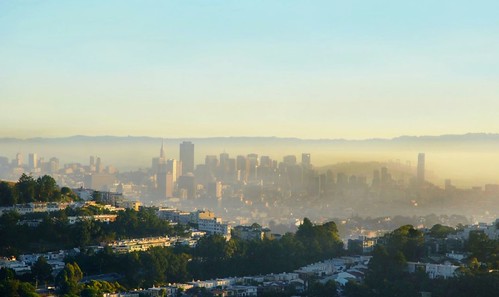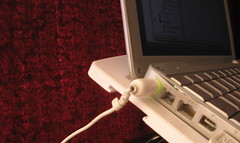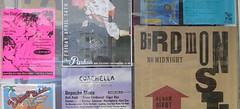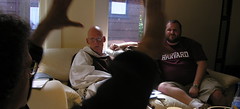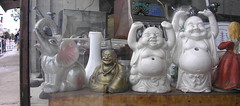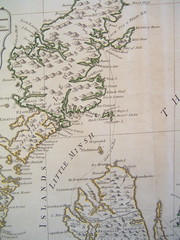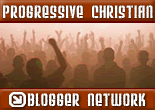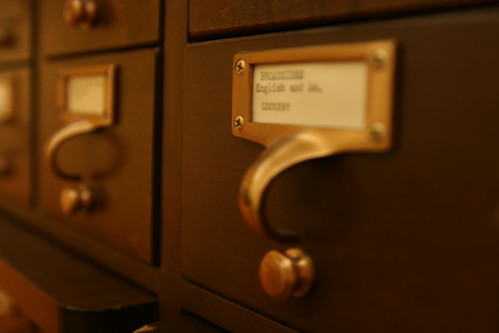
The web is thirsty for efficient, effective ways of retrieving useful information about the state of the field. This pressure creates an enormous market for those instruments that help individuals locate authoritative discourses and situated scholarship, and this, of course, is one of the traditional roles of the academic journal.
Academic Journals are in the course of rethinking their management, methods, and publication standards. This year saw major panels at the AHA (American Historical Association) and MLA (Modern Language association), largely through the leadership of the
Council of Editors of Learned Journals.
If they face this transition with courage and ingenuity, journals have the opportunity to plant themselves firmly as pillars of professional utility, scholarly collaboration, and authoritative knowledge as a public utility. Much of it may require thinking in terms of shifting communities and the life of information, and shifting sharply away from current journals' dependence on issue-by-issue websites and pdf-servers like jstor. If you're a journal editor, the first step in a shift away may indeed be so radical as taking down your website, sharing information in new ways even more deeply integrated with the flow of information on web 2.0.
I list here four major headings for the consideration of those trying to adapt academic publication to a web 2.0 world.
1) Journals must pursue interoperability with the other online tools that are shaping the techne of scholarly practice. Web 2.0 requires public visibility and interoperability with other web tools, in order that a searching aid should be found, adopted, and rendered relevant to the new research paradigms being adopted by scholars and members of the public alike. The more journals fit themselves into this paradigm, the better they'll thrive in the new order, finding readers both academic and para-academic as allies. They will function usefully as finding-aids for the most relevant, expert material in their disciplines.
In going web 2.0, journals have the ability to mesh their publications with tools that will allow readers to better integrate journal essays with the rest of their research. A scholar using zotero and jstor can download the article pdf and the citation, ready for use in footnote. Web 2.0 journals will go further into this zone: a scholar using zotero, jstor, google scholar, and delicious can instantaneously find other scholars' opinions of a particular article, the names of the disciplines and sub-disciplines they think it applies to best, and other articles of similar note to that particular scholar.
1.a)
With these tools, every published article becomes easily interfaced with the tools new scholars are using to sort their data. For example:, if you look at http://delicious.com/bibliparis4/revues you will find some sources of reviews recommended by the French librarian who holds that account. When I'm signed into delicious as joguldi, I have the option to save any of these citations from the list into my own account. Each visitor can refashion their own micro-reading-list from their colleagues' reading-lists, cutting and pasting collective knowledge into an individual canon suited to their own project.
1.b)
The promise of resilience: continued relevance to changing research patterns. The web 2.0 journal will encourage this kind of interface, working within technologies for co-tagging, sharing lists, and making-one's-own-list. In so doing, the web 2.0 journal will become intimately interfaced with scholars' processes of research, reading, and writing, remaining an indispensable part of scholarship in the next era of research. They will avoid the possible irrelevance to reading processes, subdisciplinary conversations on mailing lists/delicious/twitter, and other forms of scholarly information-sharing that are coming to predominate in the life of the digital scholar.
1.c)
The need for permanence. Web 2.0 journals must insure that some copy of whatever material they publish is backed up for posterity. They may rely upon a public, collaborative site such as archive.org for those purposes.
1.d)
Real interoperability. It is strongly desirable to use a public, widely-adopted instrument such as delicious or librarything, already equipped with full tagging, user interoperability, and visibility before the public, rather than one of the new, unstable, invite-only micro-communities for information sharing like academiacommons or scribd.
2)
Journals have opportunity to reframe their role in the academy as curators of the noise of the web.Dream Scenario: The Web 2.0 Journal as a web bastion of curatorial authority.
The web suffers from a crisis of authority which is being met on the individual, rather than the collective and disciplinary level. For questions of disciplinary fields, for example, wikipedia is likely to be irrelevant and useless. Far more useful, from my point of view, have been peer-to-peer exchanges on delicious.com, librarything, and twitter, where colleagues in proximate fields have openly shared their course reading material, current research, and private canons.
In these sharing sites, individuals tag interesting citations with a series of terms most relevantly useful to their own practice. Users are less concerned with the interoperability of those selected terms than with the project of generating as many accurate, natural-language keywords as possible (see "folksonomy" entry in Wikipedia). The collected mass of these tags becomes an ultimate subject catalog to all the possible subject headings that might apply to any given website. Particular individual users become peculiar sources of authority for a given subject heading (for example, http://delicious.com/bibliparis4/, an expert archivist at the Université Paris-Sorbonne, is an authority on the best online archives, especially in the Francophone world.
Journals have the opportunity to weave themselves as crucial threads in the fabric of online conversations if they begin tagging, becoming collective repositories of the best, collectively-ratified articles and citations available for download on the web.
In a world where the primary tools for finding new scholarship are tagged, social databases like delicious and librarything, the most efficient form of journal interface with the world might be a for journals to scrap their websites and become collective, tagging entities.
2.a)
The advantage of having an official canon of online material ratified by editors. In the world of the traditional print journal, scholars vied to get a Journal of Modern History citation on their vita because it stands for something. What if there was a http://delicious.com/victorianstudies and http://delicious.com/journalofmodernhistory?
Such a stream of official citations could come to stand in for the private account of a collective recognized for setting a standard in the field, providing much the same function as the old print citation in terms of scholarly participation and professional standing. Being collected in those entries could still stand for the product of collective vetting among recognized scholars, standing out in the same way that my more famous colleague Danah Boyd's collection,
http://delicious.com/zephoria, is better-read than my own (
http://delicious.com/joguldi).
2.b)
The editorial voice. It might seem that if the Journal of Modern History disbanded its website in favor of a delicious stream, much would be lost: for instance, the editor's voice. Not necessarily. Perhaps invited keynote editorials might deserve a special tag, setting them apart from other tags; perhaps certain articles in the JMH tagging stream would also be tagged "featured article" or "special edition."
Consider: the editor-in-chief of The Journal of British Studies for 2009-2011 has a blog, which she has maintained since 2007 and keeps writing through 2020. For the years 2009-2011, the blog entries which she writes that pertain to the field of British Studies and are ratified by the rest of the Board become tagged "editor-in-chief" on http://delicious.com/journalofbritishstudies. The researcher who searches "2009" and "editor-in-chief" under that stream will find that subset of her articles, or they can search "editor-in-chief" for the full download of editorials for JBS.
2.c)
The freedoms of web 2.0 journal operation. Web 2.0 journals that take their primary responsibility as curatorial have no need for official publication from the university press system. They are not dependent on the income model of the university press, and they have no reason to collect subscriptions: their purpose is disciplinary service and public access. There is no reason for the articles published in this format to be made private, or to require elaborate fee-charging mechanisms.
3)
Electronic journals will have the opportunity to expand their curatorial mandate include different forms of publication.
3a)
Past the essay model. The traditional journal collects and publishes only three sorts of essays: the editorial, the peer-reviewed essay of new research in 15-50 pages, and the book review. There is nothing platonic about these forms: they evolved from the culture of eighteenth-century coffee-house journals, reviewing the books in circulation, and the canonization of eighteenth-century essayists like Addison and Steele in the English curriculum of higher education at the end of the nineteenth century. They are considered the template for developing a reasoned, supported argument, and so the metric for measuring the ability to research, argue, and write.
3b)
Broader forms of inclusion. The traditional canon of essays, editorials, and book reviews has excluded much of other forms of scholarship, the circulation of whose best models are of value to the scholarly community, including: syllabi, subject division lists for qualifying exams, lectures, paragraph-sized notes/queries, lists of relevant new electronic tools, reviews of electronic tools, reports on best methods in the archives, lectures, and blog-sized opinions about exciting new directions for the field. An electronic journal has no reason to exclude a twenty-minute audio segment, a selection of maps shared on Slideshare.net, or a video segment of a conference paper shared on Youtube. Properly curated, any of these categories would be of immense disciplinary interest, worthy of collection in a journal stream.
3c)
Against exclusive publication. It is contrary to utility, in the world of web 2.0, to maintain exclusive publication rights on an article. Exclusivity of publication places a text in only one domain. Yet non-exclusive text gets reproduced and recopied, circulated around the internet, and rapidly floats onward to mimetic influence in other cultures, excerpted and referenced. For every web 2.0 author, non-exclusivity and easy republication is ideal. For every would-be-idea-of-influence in the age of web 2.0, easy reduplication is crucial.
Exclusivity has been the format followed by most online journals, which seek to mimic in form the traditional journal: one essay, neatly formatted, looking as professional as possible. Exclusive re-publication suggests the old model of authority, and is superficially reassuring to editors without actually promoting the real functions of the journal: disseminating ideas and establishing the authority of the journal-as-canon and disciplinary metric.
Significantly more desirable would be setting a different precedent: for all disseminated forms of the text to advertise the article's accreditation as having been curated by inclusion in the journal-as-stream. (the text might end with, for instance, "please recirculate with this citation: by-Professor-Bonnie-Wheeler, SMU, 2009; officially tagged in 'Arthuriana,' [link] May 2010") Advertising the link between article and journal in many reproduced/cross-referenced copies would function both to the benefit of the article and the prestige of the journal.
Again, if the dissemination model is followed, the journal homepage need not include reprints of the articles themselves: merely links to the original blogspace or university-housed-pdf or slideshow where the material was originally posted, with all of its links, illustrations, video, and wallpaper as the author originally presented it. The journal's role is reduced to curation, not to presentaiton. Not having a use for a graphic designer, typesetter, or illustrations layout person, the journal's workflow will be considerably reduced.
4)
Broadening the criteria for participation.Another major question opened by the age of the electronic journal is the issue of expertise. Like the essay, the journal peer-review process is the relic of another age: an age of abundant, unbegrudging emeriti with plentiful leisure to foster the development of younger peers who had, on average, three years of training by way of a PhD. The limited number of peer-reviewers and editors responsible for the operation of the journal at any given time, is the relic of the system limited by the expense of the US Post Office, the limited social networks of the people who invented the system, and the era of fewer PhD's on the world scene. In a new era, many of the burdens of editing and curation can be more broadly distributed to both the aid of the editors and the thriving of the discipline itself.
4a)
Benefiting from a wider array of input. In the age of web 2.0, journals have the opportunity to reconsider the distribution of time and responsibility. Is peer review a top-down mentoring process for scaling up the academic ladder, or will it be reconceived as an open playing-field (a sort of open seminar for peer review rather than a two-vetted-readers-read-you)? With the aid of wikis, it becomes possible for a single text to be usefully edited by hundreds of individuals, vetting their understanding of significance, authentic fact, and argument flow. For young scholars, accreted small suggestions of other citations, references, examples, and counterexamples, from a wider array of supporters, could conceivably enhance an article on multiple levels.
4b)
The opportunity to expand disciplinary boundaries. In web 2.0 collaboration, the thinking of interdisciplinary members of the broader academy might be usefully invited. The pressure of other ideas could hypothetically encourage the discipline to take account of the findings of related sub-disciplines (invited participation from scholars in postcolonial studies for Victorian Studies issues on empire), the concerns of related fields (are economists convinced by new findings in economic history?), and the legibility of argument to the public (does this ground-breaking, relevant article on tyranny and empire actually parse to the average reader of the NYT?)
4c)
The reconsideration of timelines. In the age of web 2.0, it is also possible for a writer to continuously revise an argument over an extended period of time, even indefinitely. For the sake of scholars' multiple projects, an indefinitely revised work is probably not ideal, but extended revisions, over the course of a year, become possible and useful for the author and the discipline. An article could be published as "officially under review" in a sub-category of the journal stream, subjected to gradual wiki conversation for a year, and remain available to a reading public for the entirety of that time.
The product that would emerge at the end of a year of wiki-ratification would be very different than that at the beginning. If the author failed, in the course of wiki revision, to produce a stronger article than at the beginning, the article could be removed from the journal stream at the end of the year.
4d)
Indefinite projects. An exception to the rule against indefinite revisions might be the case of a collectively-authored, introductory textbook (editions #33-150 of Arnstein's Introduction to British History could easily be collectively rewritten over the course of 20 years by a team of collaborators). Similarly, the journal might include a wiki article on "the state of the discipline" that was collectively revised by the journal's readership, year after year, to consider the best collective knowledge of subjects of inquiry.
(I've had the honor of being in conversation with Bonnie Wheeler of CELJ, and I want to express my gratitude here for being invited into the conversation. Editors of academic journals have been the heroes of professional support processes like peer review for a long time, and they have a brave future ahead of them, whatever course they take.)
Labels: academia, aha, authority, celj, david weinberger, delicious, experts, information, journals, mla, peer review, publishing, search, web 2.0, wikipedia
